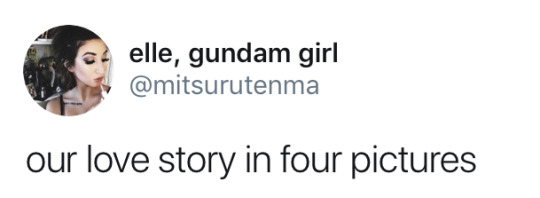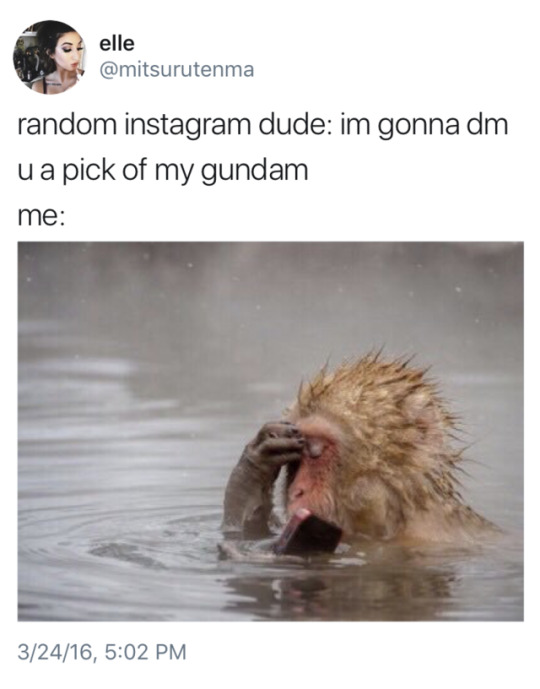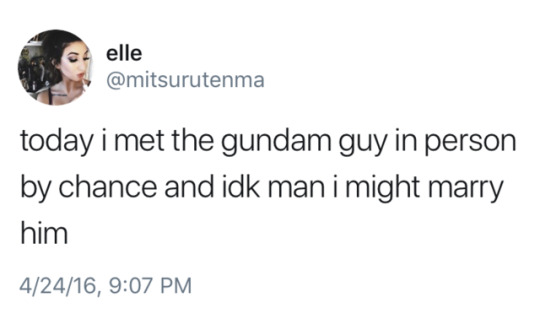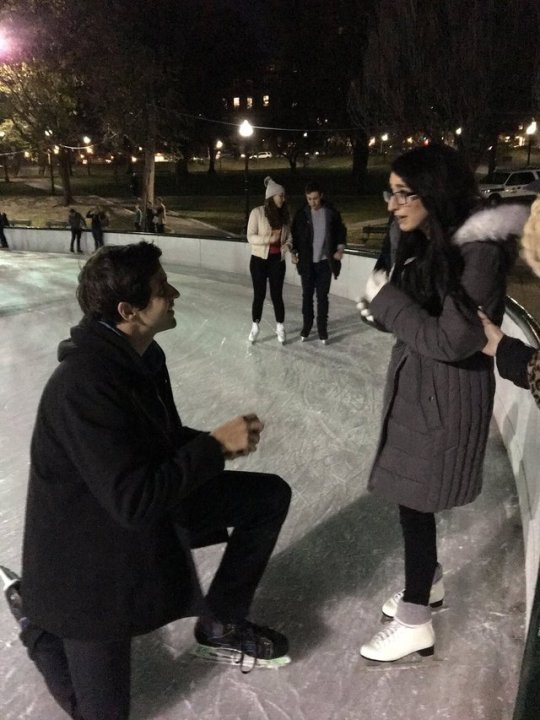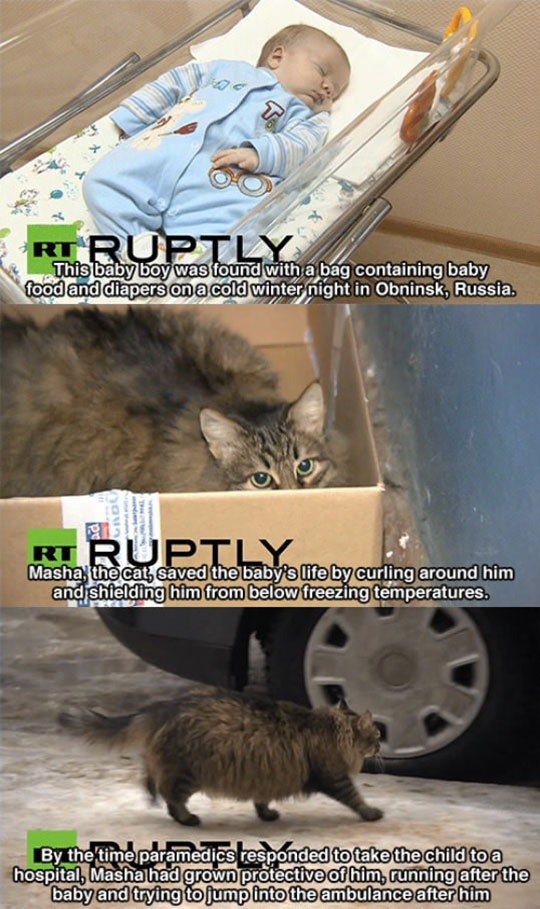An inside look into the fantastically insane world of an everyday writer; writing tips, advice, and references, along with the occasional spontaneous thought.
Don't wanna be here? Send us removal request.
Text
Description: Making Representation Obvious
Sometimes you have to code characters, either because the terms they use to describe themselves don’t exist (like secondary world fantasy), or because they haven’t found the words themselves yet (undiagnosed illnesses and disabilities). But if at all possible, you should make it clear who these people are and own that you’re putting them in the story.
Even if you actively can say that somebody is part of a certain group, you still have to make sure you’re not -washing them in the narrative. Be it whitewashing, straightwashing, abledwashing, or any sort of situation where you say one thing, but the story itself doesn’t reflect that.
Here are some things to consider that will help you make it obvious that…
This character is PoC
Describe:
Skin tone (just don’t use food metaphors)
Hair texture/colour (especially black hair)
Most commonly eaten foods at home
Microaggressions
Cultural clues that they would have (either assimilated or not, because both will have tells)
Their opinion of white people/things outside of their experience
This character is LGBTQA+
Describe:
Who they’re attracted to (or lack thereof)/past crushes (or lack thereof)
Their circle of friends (seriously, we travel in packs, I know like five straight people)
For trans characters: hormones, binders, packers, breast forms, tucking. Also, for more subtle clues, pronoun asking, euphoria at gender affirming things (like them being proud of their particularly dapper, feminine, or ‘I have no idea what gender that is but I like it’ style), dislike of off-gender things (like complaining about somebody getting them something that doesn’t match how they like to present)
The actual orientation that they are, for crying out loud
Their opinion of straight people/things outside of their experience
This character is disabled
Describe:
Their disability. Preferably in the actual labels, or make up your own labels for a secondary world fantasy
Any mobility, hearing, or speaking aids
Behaviours that come with the disability (ie- stimming such as rocking or flapping for autistic/ADHD people, navigating through appropriately wide paths for wheelchairs/walkers, sitting on one side of the group conversations to make sure their good ear catches it, etc)
Levels of aid needed and any accommodations
Avoiding things that trip them up (like somebody autistic not wanting to go where it’s crowded, a wheelchair user avoiding curbs, a Deaf person making sure there’s a sign language interpreter at a concert, somebody with celiac avoiding gluten like the plague)
Plan cancelling because it’s a bad day, or having to leave early because the environment is bad
Medications, doctors, etc, if applicable
Self care rituals for after a long day or during a flare up
Their opinion of abled people/things outside of their experience
This character is mentally/chronically ill
Describe:
Their symptoms, from good to messy, consistently
Their energy levels, as many of us use the spoon theory
Self care rituals they practice during flare ups or after hard days
Medication, doctors, therapies, etc
Cancelling plans because a bad day came up, or having to leave early because the environment is bad
Triggers and their individual reaction to their triggers
Their opinion of well people/things outside of their experience
And so on. These lists are not meant to be exhaustive at all, but they are meant to get you thinking about how you need to go about describing representation.
One thing to note: you can go about establishing representation in one of two ways. Either have the characters noting their differences, or them nothing others’ differences. Neil Gaiman’s Anansi Boys describes white skin when it appears, because within the narrator’s world, black skin is the norm. But others note their own differences. It’s all about their character.
Either one requires a lot of careful thought and sensitivity readers, but both are valid* options for owning** representation.
Followers, feel free to add more!
*Do be aware that some groups are chronically under-represented when it comes to the actual word of their identity. Bisexual people hardly have characters say the word as their identity. Autistic people also hardly have characters say the word as their identity. Be very careful of not having characters talk about themselves if the group is prone to being coded but not explicitly represented
**You have to actually own it and say they’re that when people put all the clues you left together
Thanks for reading! If you liked this content, please consider supporting me on patreon. It’ll get you access to a bunch of cool stuff!
12K notes
·
View notes
Photo
For future reference
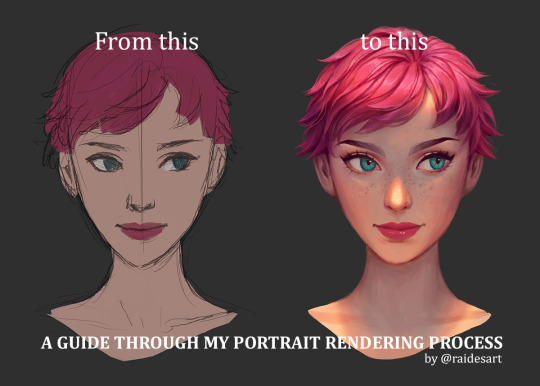

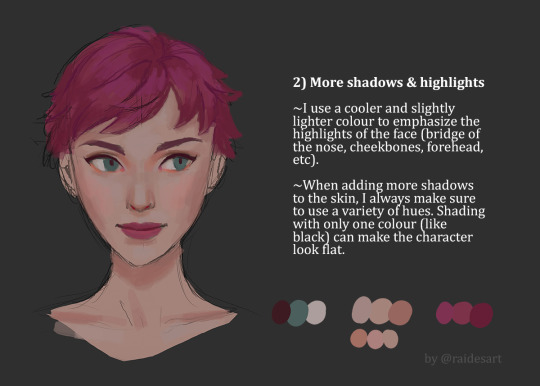
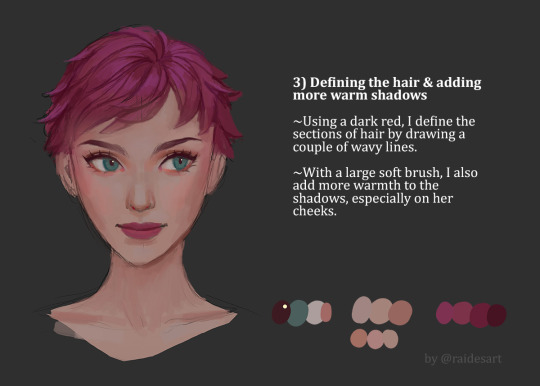

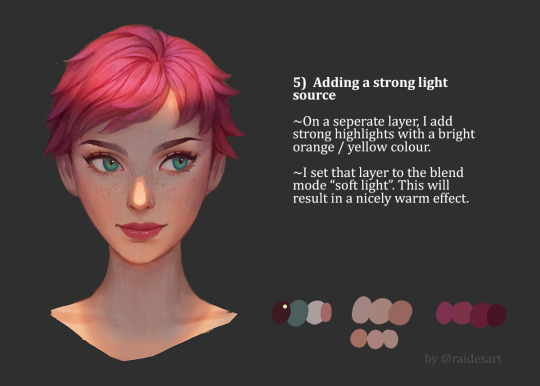
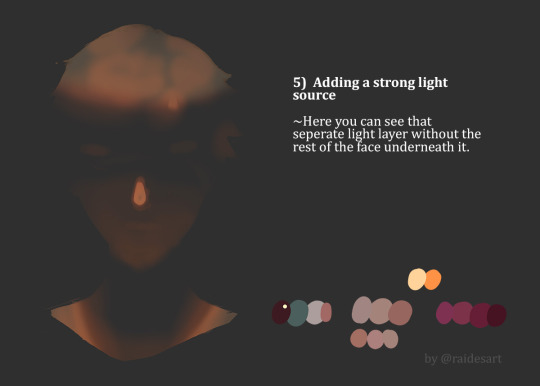
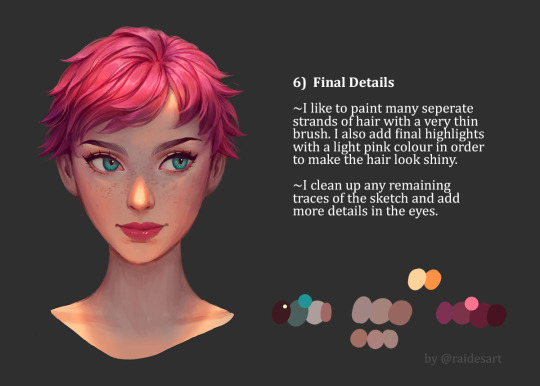
So many of you asked for a tutorial on how I paint faces/ add a light source, so here you go! 😍 Let me know if you guys have any feedback or if you want to try it yourself! 💜
40K notes
·
View notes
Text
I understand why people dislike leather and animal products. But leather is such a good resource? Like… My mom bought a sturdy leather coat in 1989. I’m in my 20’s and I now wear that coat. That’s a 30 year old coat? 30 years, two generations, one coat. Versus, like… A plastic one, that rips and gets thrown out, or releases bits into the ecosystem every time it’s washed, takes a billion years to decompose, lasts maybe a decade if you’re super duper careful, and uses oil products in it’s construction. Like, yeah leather is expensive and comes from a living animal, and I’m not saying that you should go out and buy fifty fur and leather products for the he’ll of it, but like… Maybe the compromise is worth it? One animal product, valued and respected and worn down for generations, versus like… Six plastic products that will never ever go away?
idk, I could be wrong.
223K notes
·
View notes
Text
I’m too fucking old for games. If you think I’m cute, tell me. If you wanna kiss my neck, do it. If you like me, act like it. I don’t have time for bullshit and mind games. I’m down for you and you only but don’t manipulate me.
123K notes
·
View notes
Photo
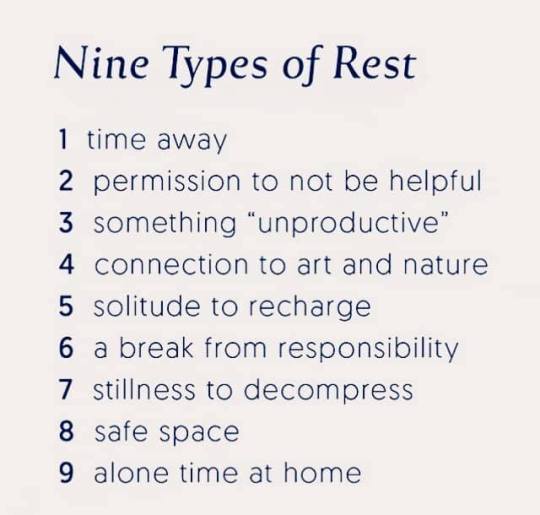
I don’t know where this came from but I NEEDED it
229K notes
·
View notes
Text
captain america: so do any avengers have any pressing business
blade: are any of you motherfuckers gonna help me fight the vampires. please. there are so many.
captain america: no
108K notes
·
View notes
Text
My heart is so full right now. Congratulations, Bob and Eliza! 💞



1K notes
·
View notes
Photo
My Queen, always and forever.




Emilia Clarke photographed by Alexi Lubomirski for Elle Magazine (2017)
2K notes
·
View notes
Text
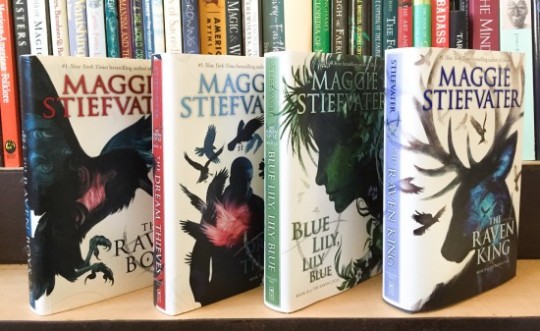
I’ve decided to tell you guys a story about piracy.
I didn’t think I had much to add to the piracy commentary I made yesterday, but after seeing some of the replies to it, I decided it’s time for this story.
Here are a few things we should get clear before I go on:
1) This is a U.S. centered discussion. Not because I value my non U.S. readers any less, but because I am published with a U.S. publisher first, who then sells my rights elsewhere. This means that the fate of my books, good or bad, is largely decided on U.S. turf, through U.S. sales to readers and libraries.
2) This is not a conversation about whether or not artists deserve to get money for art, or whether or not you think I in particular, as a flawed human, deserve money. It is only about how piracy affects a book’s fate at the publishing house.
3) It is also not a conversation about book prices, or publishing costs, or what is a fair price for art, though it is worthwhile to remember that every copy of a blockbuster sold means that the publishing house can publish new and niche voices. Publishing can’t afford to publish the new and midlist voices without the James Pattersons selling well.
It is only about two statements that I saw go by:
1) piracy doesn’t hurt publishing.
2) someone who pirates the book was never going to buy it anyway, so it’s not a lost sale.
Now, with those statements in mind, here’s the story.
It’s the story of a novel called The Raven King, the fourth installment in a planned four book series. All three of its predecessors hit the bestseller list. Book three, however, faltered in strange ways. The print copies sold just as well as before, landing it on the list, but the e-copies dropped precipitously.
Now, series are a strange and dangerous thing in publishing. They’re usually games of diminishing returns, for logical reasons: folks buy the first book, like it, maybe buy the second, lose interest. The number of folks who try the first will always be more than the number of folks who make it to the third or fourth. Sometimes this change in numbers is so extreme that publishers cancel the rest of the series, which you may have experienced as a reader — beginning a series only to have the release date of the next book get pushed off and pushed off again before it merely dies quietly in a corner somewhere by the flies.
So I expected to see a sales drop in book three, Blue Lily, Lily Blue, but as my readers are historically evenly split across the formats, I expected it to see the cut balanced across both formats. This was absolutely not true. Where were all the e-readers going? Articles online had headlines like PEOPLE NO LONGER ENJOY READING EBOOKS IT SEEMS.
Really?
There was another new phenomenon with Blue Lily, Lily Blue, too — one that started before it was published. Like many novels, it was available to early reviewers and booksellers in advanced form (ARCs: advanced reader copies). Traditionally these have been cheaply printed paperback versions of the book. Recently, e-ARCs have become common, available on locked sites from publishers.
BLLB’s e-arc escaped the site, made it to the internet, and began circulating busily among fans long before the book had even hit shelves. Piracy is a thing authors have been told to live with, it’s not hurting you, it’s like the mites in your pillow, and so I didn’t think too hard about it until I got that royalty statement with BLLB’s e-sales cut in half.
Strange, I thought. Particularly as it seemed on the internet and at my booming real-life book tours that interest in the Raven Cycle in general was growing, not shrinking. Meanwhile, floating about in the forums and on Tumblr as a creator, it was not difficult to see fans sharing the pdfs of the books back and forth. For awhile, I paid for a service that went through piracy sites and took down illegal pdfs, but it was pointless. There were too many. And as long as even one was left up, that was all that was needed for sharing.
I asked my publisher to make sure there were no e-ARCs available of book four, the Raven King, explaining that I felt piracy was a real issue with this series in a way it hadn’t been for any of my others. They replied with the old adage that piracy didn’t really do anything, but yes, they’d make sure there was no e-ARCs if that made me happy.
Then they told me that they were cutting the print run of The Raven King to less than half of the print run for Blue Lily, Lily Blue. No hard feelings, understand, they told me, it’s just that the sales for Blue Lily didn’t justify printing any more copies. The series was in decline, they were so proud of me, it had 19 starred reviews from pro journals and was the most starred YA series ever written, but that just didn’t equal sales. They still loved me.
This, my friends, is a real world consequence.
This is also where people usually step in and say, but that’s not piracy’s fault. You just said series naturally declined, and you just were a victim of bad marketing or bad covers or readers just actually don’t like you that much.
Hold that thought.
I was intent on proving that piracy had affected the Raven Cycle, and so I began to work with one of my brothers on a plan. It was impossible to take down every illegal pdf; I’d already seen that. So we were going to do the opposite. We created a pdf of the Raven King. It was the same length as the real book, but it was just the first four chapters over and over again. At the end, my brother wrote a small note about the ways piracy hurt your favorite books. I knew we wouldn’t be able to hold the fort for long — real versions would slowly get passed around by hand through forum messaging — but I told my brother: I want to hold the fort for one week. Enough to prove that a point. Enough to show everyone that this is no longer 2004. This is the smart phone generation, and a pirated book sometimes is a lost sale.
Then, on midnight of my book release, my brother put it up everywhere on every pirate site. He uploaded dozens and dozens and dozens of these pdfs of The Raven King. You couldn’t throw a rock without hitting one of his pdfs. We sailed those epub seas with our own flag shredding the sky.
The effects were instant. The forums and sites exploded with bewildered activity. Fans asked if anyone had managed to find a link to a legit pdf. Dozens of posts appeared saying that since they hadn’t been able to find a pdf, they’d been forced to hit up Amazon and buy the book.
And we sold out of the first printing in two days.
Two days.
I was on tour for it, and the bookstores I went to didn’t have enough copies to sell to people coming, because online orders had emptied the warehouse. My publisher scrambled to print more, and then print more again. Print sales and e-sales became once more evenly matched.
Then the pdfs hit the forums and e-sales sagged and it was business as usual, but it didn’t matter: I’d proven the point. Piracy has consequences.
That’s the end of the story, but there’s an epilogue. I’m now writing three more books set in that world, books that I’m absolutely delighted to be able to write. They’re an absolute blast. My publisher bought this trilogy because the numbers on the previous series supported them buying more books in that world. But the numbers almost didn’t. Because even as I knew I had more readers than ever, on paper, the Raven Cycle was petering out.
The Ronan trilogy nearly didn’t exist because of piracy. And already I can see in the tags how Tumblr users are talking about how they intend to pirate book one of the new trilogy for any number of reasons, because I am terrible or because they would ‘rather die than pay for a book’. As an author, I can’t stop that. But pirating book one means that publishing cancels book two. This ain’t 2004 anymore. A pirated copy isn’t ‘good advertising’ or ‘great word of mouth’ or ‘not really a lost sale.’
That’s my long piracy story.
50K notes
·
View notes
Text
Honestly though, when I was first reading this series, when I hit #5 in the second book, it sent CHILLS through my body and I got so cold because I knew EXACTLY what that feeling was. I honestly can’t ever hate this series (bad writing aside) because there was so much that I *felt*. It made you feel things, which is what a book is *supposed* to do.
Okay look. Stephanie Meyer contributed four (4) cool things to the contemporary fantasy genre, which I shall now list here in the hopes of getting it out of my system. In descending order of importance:
1. Writing a story about a girl who wants something. Plot driven by a woman’s (non-vilified) desire. Truly dreadful execution but still a good idea, sort of a literary incarnation of the “he a little confused but he got the spirit” meme.
2. The fact that when Bella becomes a vampire she can still breathe but “there’s no relief tied to the action” which I remember verbatim because it fucking slapped. The idea of human physical sensations being partially defined by our mortality and the sensations still exist after you become undead but your experience of them is fundamentally different because you no longer need any of it? Extremely cool. The closest Meyer came to taking an interesting stance on vampires being dead.
3. Werewolves are immortal but they can literally stop whenever they want. That shit’s hilarious. Curse of immortality who.
4. The fact that vampires don’t sleep or get tired so their communally-raised baby doesn’t have a crib because she is always in someone’s arms. That was extremely cute and there’s a different, better book contained somewhere in that specific concept.
186K notes
·
View notes
Text
This weekend I was told a story which, although I’m kind of ashamed to admit it, because holy shit is it ever obvious, is kind of blowing my mind.
A friend of a friend won a free consultation with Clinton Kelly of What Not To Wear, and she was very excited, because she has a plus-size body, and wanted some tips on how to make the most of her wardrobe in a fashion culture which deliberately puts her body at a disadvantage.
Her first question for him was this: how do celebrities make a plain white t-shirt and a pair of weekend jeans look chic? She always assumed it was because so many celebrities have, by nature or by design, very slender frames, and because they can afford very expensive clothing. But when she watched What Not To Wear, she noticed that women of all sizes ended up in cute clothes that really fit their bodies and looked great. She had tried to apply some guidelines from the show into her own wardrobe, but with only mixed success. So - what gives?
His answer was that everything you will ever see on a celebrity’s body, including their outfits when they’re out and about and they just get caught by a paparazzo, has been tailored, and the same goes for everything on What Not To Wear. Jeans, blazers, dresses - everything right down to plain t-shirts and camisoles. He pointed out that historically, up until the last few generations, the vast majority of people either made their own clothing or had their clothing made by tailors and seamstresses. You had your clothing made to accommodate the measurements of your individual body, and then you moved the fuck on. Nothing on the show or in People magazine is off the rack and unaltered. He said that what they do is ignore the actual size numbers on the tags, find something that fits an individual’s widest place, and then have it completely altered to fit. That’s how celebrities have jeans that magically fit them all over, and the rest of us chumps can’t ever find a pair that doesn’t gape here or ride up or slouch down or have about four yards of extra fabric here and there.
I knew that having dresses and blazers altered was probably something they were doing, but to me, having alterations done generally means having my jeans hemmed and then simply living with the fact that I will always be adjusting my clothing while I’m wearing it because I have curves from here to ya-ya, some things don’t fit right, and the world is just unfair that way. I didn’t think that having everything tailored was something that people did.
It’s so obvious, I can’t believe I didn’t know this. But no one ever told me. I was told about bikini season and dieting and targeting your “problem areas” and avoiding horizontal stripes. No one told me that Jennifer Aniston is out there wearing a bigger size of Ralph Lauren t-shirt and having it altered to fit her.
I sat there after I was told this story, and I really thought about how hard I have worked not to care about the number or the letter on the tag of my clothes, how hard I have tried to just love my body the way it is, and where I’ve succeeded and failed. I thought about all the times I’ve stood in a fitting room and stared up at the lights and bit my lip so hard it bled, just to keep myself from crying about how nothing fits the way it’s supposed to. No one told me that it wasn’t supposed to. I guess I just didn’t know. I was too busy thinking that I was the one that didn’t fit.
I thought about that, and about all the other girls and women out there whose proportions are “wrong,” who can’t find a good pair of work trousers, who can’t fill a sweater, who feel excluded and freakish and sad and frustrated because they have to go up a size, when really the size doesn’t mean anything and it never, ever did, and this is just another bullshit thing thrown in your path to make you feel shitty about yourself.
I thought about all of that, and then I thought that in elementary school, there should be a class for girls where they sit you down and tell you this stuff before you waste years of your life feeling like someone put you together wrong.
So, I have to take that and sit with it for a while. But in the meantime, I thought perhaps I should post this, because maybe my friend, her friend, and I are the only clueless people who did not realise this, but maybe we’re not. Maybe some of you have tried to embrace the arbitrary size you are, but still couldn’t find a cute pair of jeans, and didn’t know why.
369K notes
·
View notes
Text
ya know, I really appreciate how ugly the creators of avatar made Zuko in the earlier stories….they Knew fans traditionally drool over cute villains. They saw that shit coming and decided no, you’re all gonna WAIT until his fucking character arc hits. he needed to EARN his hotness. evil glorifying horny demons were denied access to the show. I respect that
23K notes
·
View notes
Photo


“I feel like I’m much older a soul than I am in age. I feel like I’ve lived enough life to know. I’ve met enough guys to know — I’ve met enough girls to know. I don’t feel 22. I feel like 27, 28.” As for the “girls” part: “Everyone experiments,” she says with a shrug. “It’s part of growing up. I love a soul, not a gender.”
910 notes
·
View notes
Text
i love little kids with very niche interests. Like for awhile I nannied for a family who had a little girl who loved old black and white movies. She adopted a transatlantic accent, constantly wore a long string of plastic pearls, and would often dramatically drape herself over pieces of furniture when told to do something and say “I just can’t do it babe”
222K notes
·
View notes
